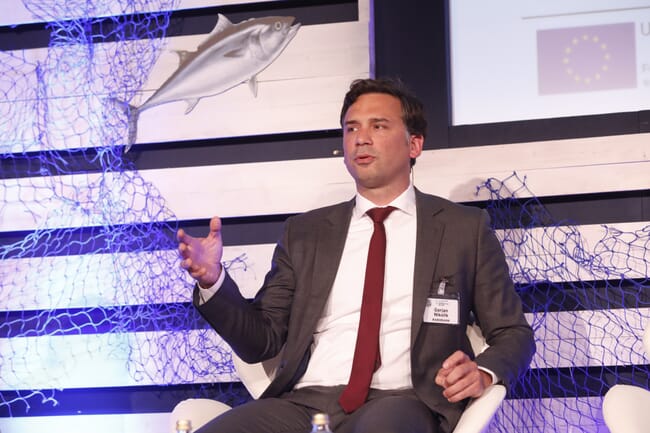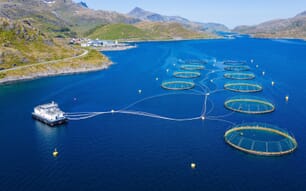Speaking to The Fish Site today, the senior seafood analyst outlined how the pandemic is likely to be hugely influential in terms of the species of seafood consumed, the means of sourcing it and the way it is processed. It will also have a considerable impact on investment in the sector.

Seafood channels
In terms of market share, food service is likely to be the big loser – even after lockdowns are eased in many countries.
“In the US food service sales have fallen by 60 percent, and fine dining down by as much as 80 percent, while in Europe this decline has been even sharper. Even in China, food service sales are only back to 60 percent of their 2019 levels and many restaurants aren’t yet reopening due to the social distancing protocols – needing to ensure that customers remain a certain distance apart means that it won’t make financial sense for many restaurants to open, even when they are allowed to,” Nikolik notes.
And – regardless of restrictions – he sees there being a considerable lag time before consumers’ appetites to eat out return.
“Consumer confidence has taken a battering – 41 percent of those taking part in a survey in the US in mid-April said they’d take 1-5 months to return to restaurants after restrictions were lifted, while 20 percent said they’d wait six months or more,” he points out.
Meanwhile online seafood sales are booming at the expense of wet markets, which is in turn having an impact on the type of seafood that is selling well.
“Wet markets have closed all over Asia, with consumers having to turn to online delivery, and even when these markets are allowed to reopen I think online will maintain a much larger share of the seafood market than pre-COVID – with both online seafood retail and online restaurant deliveries likely to experience long terms gains.
“In fact, I think the pandemic has moved the online sector forward by about 10 years – many people who had never bought online, in particular the older generation, are now doing so with impunity,” he explains.
However, as Nikolik notes, not all products fare equally well in the online market.
“Species and brands that people trust – for example Norwegian salmon – are likely to do well in a system where – unlike in wet markets – it’s not possible to see or touch the product that you’re buying,” he reflects.
Movement restrictions have also favoured the sale of products with shorter supply chains.
“The food service sector tends to have a longer supply chain, which makes it harder for them to source ingredients. Retailers, on the other hand are looking to source larger commodities – such as salmon and shrimp – rather than niche species,” explains Nikolik.
There is, however, a possibility for fast-thinking processors to find a market for high end niche species.
“Some consumers are reluctantly turning to online and retail in the absence of food service opportunities and there’s an opportunity for processors to create new, luxury seafood products that allow this demographic to recreate the restaurant experience in their own homes. It’s likely they have until at least early 2021 to make these products,” Nikolik reflects, alluding to the earliest that the food service sector is likely to return to 2019 levels.
Processing
Disruptions to seafood processing plants caused by the pandemic are also, believes Nikolik, going to lead to significant long-term changes in that sector – with issues relating to worker welfare having a serious negative impact in some countries.
“We’ve seen processing plants being closed down during the pandemic. In the US, issues with processing employees getting infected while at work look likely to lead to long and costly lawsuits for the processing firms.
“This is only going to push the processing companies towards further automation – it will accelerate the drive towards the development and adoption of more robotics and new technology that reduces the need for labour,” he explains.
The export of seafood products for reprocessing in Asia is also, Nikolik believes, likely to be reduced.
“This trend had already started during the US-China trade war and will be compounded by the pandemic, leading to a higher proportion of domestic processing,” he reflects.
Investment
COVID-19 will also have a significant impact on the investment landscape and Nikolik believes that it will be hard for new ventures to attract funding, as banks and investors focus on existing clients and projects. He also thinks that demand for high end niche species is likely to suffer the most.
“Many of the new ventures looking for funding have been focused on either new species or more common species produced under RAS conditions to differentiate them from the commodities. These tend to target the food service market – it can deal with small batches, and it can effectively communicate the value of the product to the consumer,” he explains.
“But due to the decline in demand from the food service sector, the business models of many of the more advanced systems that are looking for investment have been exposed,” he adds.
There is, however, some hope for these systems – due to their tendency to be built close to their target markets. This not only shortens the supply chain, but also helps to improve the food security of the countries in which they are located, which can lead to added political and regulatory support for operators in this part of the sector.
“Many RAS are positioned close to their customer base. And in times of crisis food security becomes more of an issue, leading governments to focus on import substitution [the domestic production of products that were previously imported]. Taking a medium-term perspective, once the economic recovery is underway, legislation to encourage the growth of domestic aquaculture – such as is being planned by President Trump in the US – might help to kick-start new projects,” Nikolik reflects.
Timescale for recovery
Precisely when the current economic gloom is likely to lift remains hard to predict, concedes Nikolik, but the government bail-outs should have an impact before too long.
“The financial stimulus packages issued have been on a scale unseen since World War II – they’ve surpassed the 2008 recovery packages by some margin – but the cash will still take a while to kick in: it depends on levels of employment, confidence and whether there’s a second wave of the pandemic,” he explains.
“However, most economic models suggest that the recovery will start in mid-2021. If you look at the salmon price – which is currently at NOK 49/kg – forecasts suggest that this might decline to as low as NOK 40/kg in the summer, but is likely to return to around NOK 50/kg by the end of the year and back up to NOK 60/kg by the first quarter of 2021,” he concludes.



